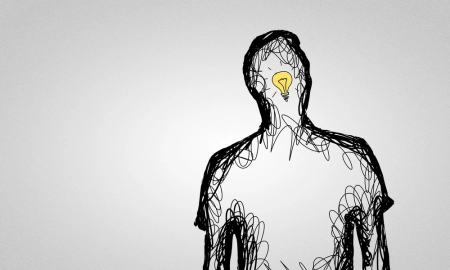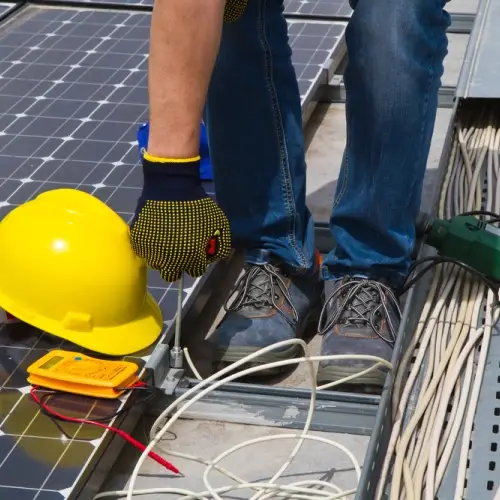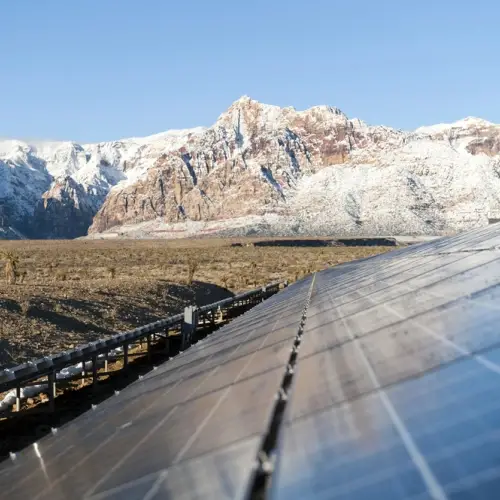
Solar energy is one of the most promising renewable energy sources in the world today.
As an engineer, I often encounter people who are interested in adopting this type of energy, but also doubts and misunderstandings that prevent them from taking the step. This is normal, since over the years many myths have emerged about solar energy that can cause confusion.
In this article, I aim to clear up some of these common myths so you can make more informed decisions about using solar energy in your home or business.
Myth 1: Solar panels do not work on cloudy or rainy days
This is one of the most common myths and the easiest to debunk. While it is true that solar panels work best in direct sunlight, that does not mean that they will stop producing energy on cloudy or rainy days. Solar panels can still generate electricity in diffuse light conditions. What happens is that the amount of energy produced will be less than on a sunny day.
To put this into context, countries like Germany, which are not known for having a particularly sunny climate, are world leaders in the adoption of solar energy. This shows that solar panels don’t just work in warm, sunny climates, but can be effective in a wide variety of weather conditions.
Myth 2. Solar energy is too expensive
 This myth has been true in the past, but it is no longer true today. Solar technology has advanced greatly in the past few decades, and with those advances has come a significant reduction in costs. In fact, the price of solar panels has dropped by 70% in the past decade, and continues to fall as demand and production increase.
This myth has been true in the past, but it is no longer true today. Solar technology has advanced greatly in the past few decades, and with those advances has come a significant reduction in costs. In fact, the price of solar panels has dropped by 70% in the past decade, and continues to fall as demand and production increase.
Additionally, many countries offer tax incentives, grants, and financing programs that make installing solar panels even more accessible. While the initial investment can be considerable, the savings on energy bills over the years make solar energy one of the most cost-effective options in the long run. In many cases, solar energy systems pay for themselves within just a few years, and after that, you'll basically have free electricity.
Myth 3. Solar energy is not reliable because the sun does not shine all the time
It's true that solar panels only generate power when there's sunlight, but that doesn't mean solar power isn't reliable. What many people don't know is that there are solutions to store solar energy generated during the day so you can use it when the sun isn't shining. Energy storage systems, such as solar batteries, allow you to store excess energy for use at night or on cloudy days.
Plus, most solar installations are grid-tied, meaning you can continue to use electricity from the grid when your solar panels aren't producing enough power. This way, you can combine the best of both worlds: solar power when it's available and grid electricity when it's not.
Myth 4. Solar panels require a lot of maintenance
 Solar panels actually require very little maintenance. They have no moving parts, which means there aren't many things that can wear out or break. Once installed, solar panels simply do their job, converting sunlight into electricity without you having to worry about them too much.
Solar panels actually require very little maintenance. They have no moving parts, which means there aren't many things that can wear out or break. Once installed, solar panels simply do their job, converting sunlight into electricity without you having to worry about them too much.
The main maintenance involves keeping the panels clean to ensure they can capture as much sunlight as possible. In most cases, rain is enough to clean away any dust and debris that may build up on the panels. However, if you live in a very dusty area or one with little rainfall, you may need to clean them a couple of times a year.
Myth 5. Solar panels damage the roof
This is another myth I often encounter, and the truth is that it is not true. Solar panels do not damage your roof if installed correctly. In fact, in many cases, solar panels can protect your roof from direct sun exposure and inclement weather, which can extend the life of your shingles or roofing material.
Additionally, professional installers know how to ensure that solar panels are mounted securely and without damaging the roof structure. If you have a roof that needs repairs, it's a good idea to make those repairs before installing solar panels, but simply installing the panels shouldn't cause any damage.
Myth 6. Solar panels don't last long enough to justify the investment
Modern solar panels are designed to last a long time. Most solar panels come with warranties of between 25 and 30 years, but they will likely continue to work even after the warranty expires. The energy output of solar panels decreases slightly over time, but most panels will still be able to generate around 80% of their original capacity after 25 years.
When you consider the long lifespan of solar panels and the fact that they generate free electricity for most of that time, the initial investment is clearly justified. And while you may eventually need to replace some system components, such as the inverter, the panels themselves should last for decades.
Myth 7. Solar energy is not enough to power an entire house
This myth is based on a misunderstanding of how much energy solar panels can generate and how much energy a typical home consumes. The reality is that a well-designed solar panel system can generate enough electricity to meet a home's energy needs, depending on factors such as system size, geographic location, and energy consumption habits.
In some cases, it may be necessary to supplement solar power with electricity from the grid, especially on low-light days or if you have very high energy usage. However, solar power can cover a significant portion, if not all, of a well-managed home's energy needs.
Myth 8. Solar panels are bad for the environment
 This myth stems from the fact that solar panels require resources to manufacture, leading some people to believe that their environmental impact is negative. However, when you factor in the lifespan of solar panels and the amount of clean electricity they produce, the environmental impact of solar panels is significantly lower than that of traditional energy sources such as coal or gas.
This myth stems from the fact that solar panels require resources to manufacture, leading some people to believe that their environmental impact is negative. However, when you factor in the lifespan of solar panels and the amount of clean electricity they produce, the environmental impact of solar panels is significantly lower than that of traditional energy sources such as coal or gas.
Solar energy produces no greenhouse gas emissions while in operation, and once installed, solar panels offset the energy used in their manufacture in just a few years. From then on, they continue to generate clean electricity for decades.
Myth 9. Solar only works if you are off the grid
This is another myth that stems from a misunderstanding of how solar power works. While it's true that you can install an off-grid solar system, most residential solar systems are tied to the power grid. This allows you to draw power from the grid when your panels aren't producing enough electricity, and in many cases, you can even sell the excess power you generate back to the grid.
In fact, being connected to the grid is an advantage for most people as it ensures a constant supply of electricity, no matter the weather or time of day. A grid-tied solar system allows you to make the most of solar energy without having to worry about running out of electricity.
Conclusion
Solar energy is a proven and increasingly accessible technology that can bring huge benefits to both the environment and your wallet. As an engineer in the field of renewable energy, I can confidently say that many of the myths about solar energy are just that: myths. If you are thinking about installing solar panels, the most important thing is to be well informed and consult with professionals who can advise you on the best solutions for your particular situation.
The reality is that solar energy is one of the cleanest, most cost-effective and sustainable options we have for the future. And the sooner we put the myths to rest, the sooner we can harness its full potential.